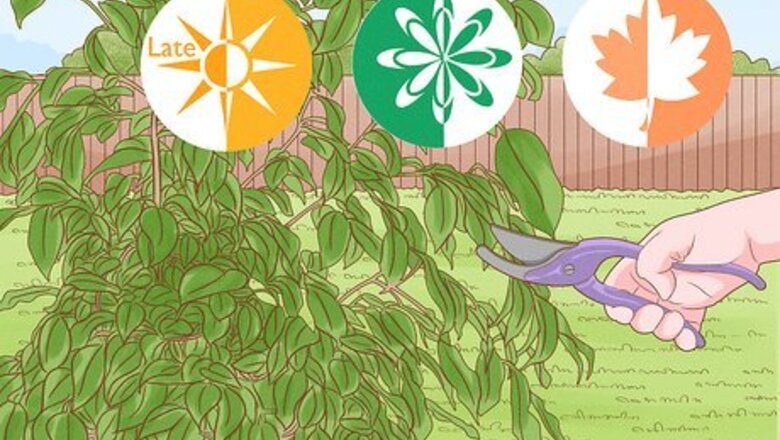
views
Choosing When to Prune
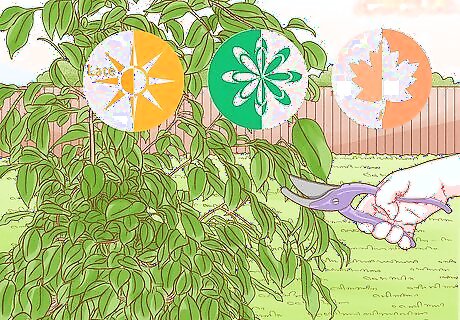
Trim outdoor ficuses anytime in late summer, fall, or spring. Outdoor ficuses are fairly adaptable and can be trimmed during most seasons. Anytime from late summer to early spring is ideal, as this is right before and after your ficus's dormant season. Try not to prune your outdoor tree in early summer, as this can induce an off-season growth spurt and leave your plant more vulnerable to frost.
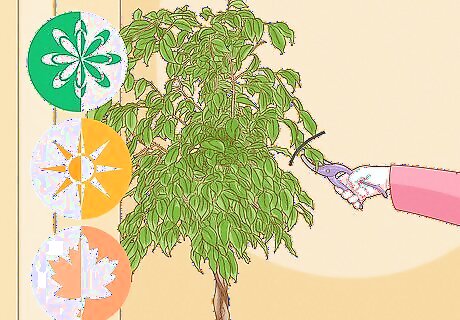
Prune indoor ficuses in summer, autumn, or early spring. Indoor ficuses need regular pruning to remove old leaves and shape the plant to its living space. Avoid pruning your indoor ficus in mid-spring, however, particularly when it is forming new leaves and buds.
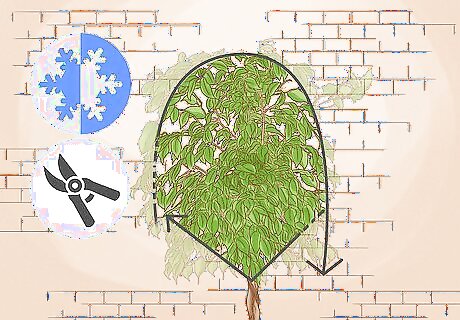
Shape ficuses in winter. For extensive shaping, wait until your plant's dormant season in winter. Your plant is least likely to sustain shock from pruning and, with outdoor plants, you'll be able to see the branch structure better.
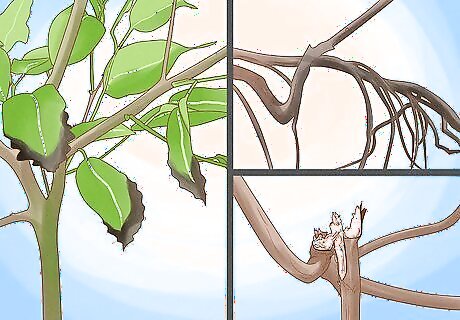
Prune away diseased, broken, or dead branches anytime. Dying or dead branches can weaken your tree and make it vulnerable to further damage. To prevent this from happening, remove damaged branches as you notice them. If your tree is weak, avoid pruning beyond from trimming or cutting away damaged areas.
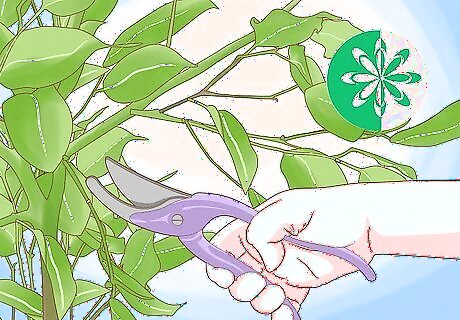
Prune your ficus in the spring if you want it to grow fuller. If you've noticed excessively thin areas on your ficus, pruning can encourage branching. Try trimming your ficus in early springtime to encourage branch and foliage growth during the next season. If you've noticed thinning in summer or early fall, wait until the following season to prune for this reason.
Doing Routine Pruning

Put on gardening gloves before handling your ficus. Most ficus varieties excrete a toxic milky sap that causes skin irritation. To prevent rashes, wear thick gloves while pruning your ficus. Gloves made with latex or thin fabrics will not protect your skin from the ficus's sap. You can find thick gardening gloves at most plant nurseries or garden centers.
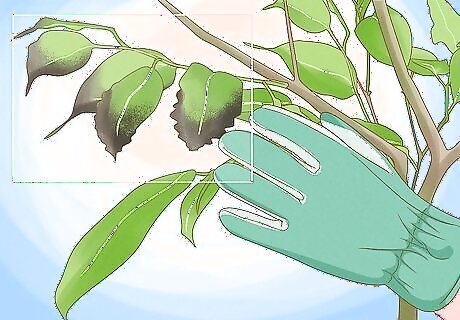
Inspect your tree for dying or dead branches. If you notice diseased, damaged, or dead branches, prune them away at a downward slant with your loppers or shears. Cut the damaged branch back to a healthy area to help your tree heal and focus its energy on healthy branches. Dying or dead branches usually lose their bark and have grey or decaying wood.
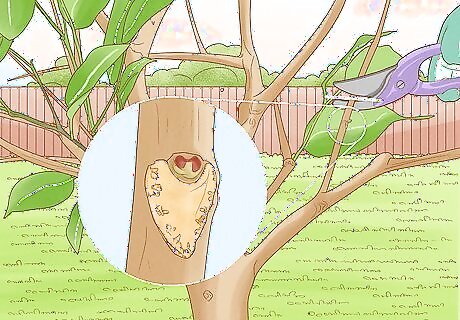
Prune above leaf scars to encourage fuller growth. If your ficus tree has thinned out more than usual, inspect your ficus for scars where leaves used to be. Clip directly above leaf scars to encourage thicker foliage as your plant grows. Leaf scars are small, round marks found where your plant originally grew leaves. They're usually lighter in color than the surrounding branch. Pruning above leaf scars should ideally be done in spring.
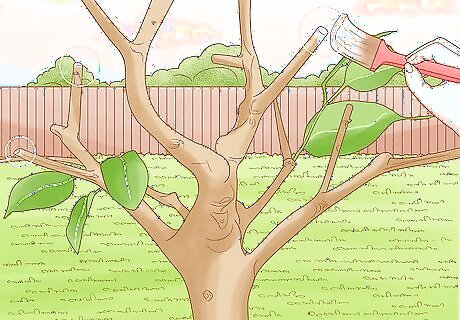
Put cut paste on extensively pruned areas. If you prune back large branches or make many cuts, apply cut paste over the clipped area. Because pruning is like making many small wounds on a plant, cut paste will help your tree heal and protect it from diseases and pests while it recovers. You can buy cut paste online or at most plant nurseries.
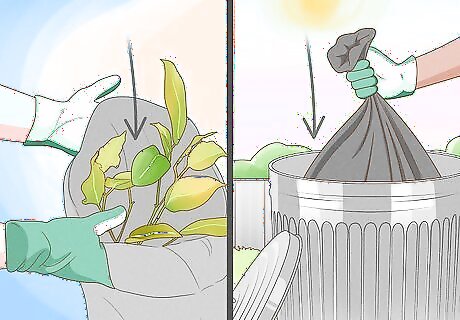
Discard ficus clippings immediately after pruning. Because ficus plants are toxic, their clippings cannot be used as a mulch or compost. Collect the clippings in a trash bag and discard them when you're done pruning. For an environmentally-friendly alternative, ask local recycling centers if they can make use of your ficus clippings.
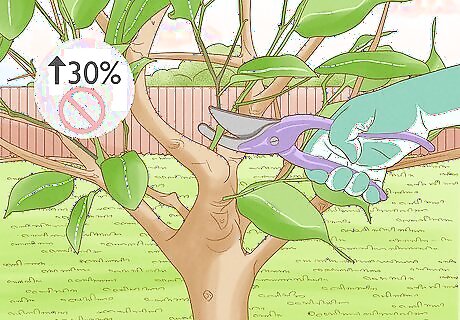
Don't prune more than 30% of your ficus at a time. Too much pruning can throw your tree into shock and leave it vulnerable to diseases. Limit yourself to removing less than 30% of your ficus's foliage and branch structure at a time. If any tree damage expands across more than 30% of the plant, hire a professional landscaper to determine the best treatment for it.
Shaping the Tree
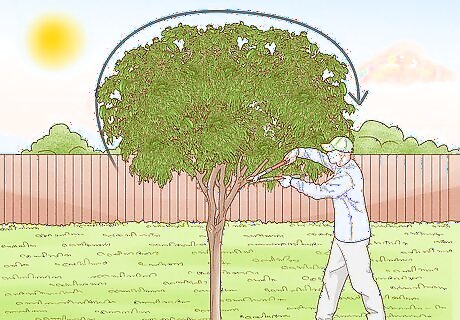
Work with your tree's natural shape. Ficuses are not ideal plants for extensive shaping. When shaping your tree, keep your tree's initial shape in mind and aim for a trimmer, better maintained version of its original pattern. Ficus trees are usually round and widest at the bottom.
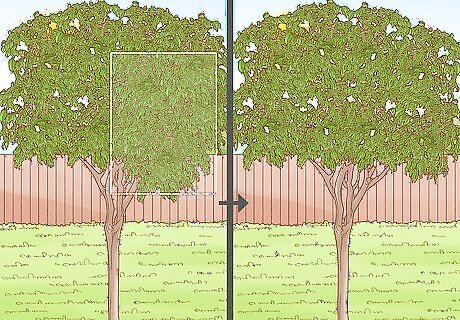
Thin out any overgrown areas. Inspect your tree for branches that jut from the plant's natural shape or overlap other branches. Cut away these overgrown branches with shears or loppers, depending on the branch size, directly above a node or where another stem branches off to minimize damage. Thinning out your ficus's foliage helps light penetrate the tree, which can make the plant look fuller and give it better air flow.
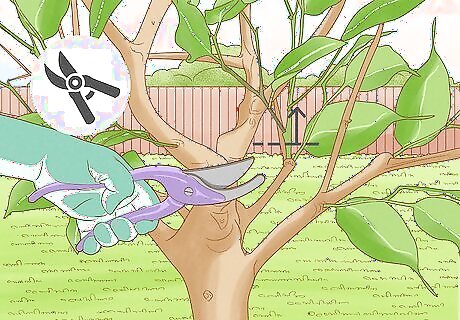
Prune away vertical branches. Vertical branches can give your tree a bulky, awkward shape. Inspect your tree for any branches growing upward and cut them back using your loppers or shears.
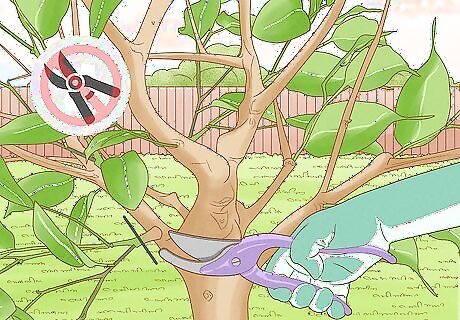
Avoid removing lower branches or leaves. The lower leaves and branches bring essential nutrients to the trunk, and a strong trunk is essential for holding up the ficus's foliage. Thin or shape the lower branches lightly to keep your tree strong. This is especially true for smaller ficus trees like rubber trees and fiddle leaf figs.
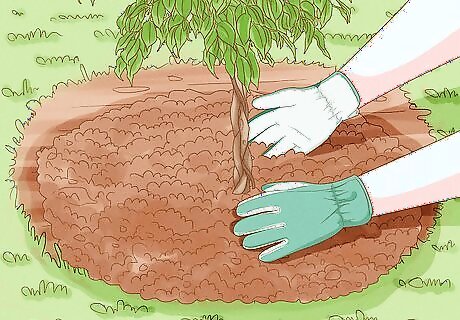
Transplant or repot your ficus if it grows too large. If you've cut back about 30% of your ficus and it is still too large for its pot or your backyard, try repotting or replanting it somewhere else. This can give your ficus more room to grow without sending it into shock from excessive pruning. Avoid transplanting trees with a trunk diameter wider than 2 inches (5.1 cm). Hire a landscaper or nursery professional to replant large ficus trees.




















Comments
0 comment